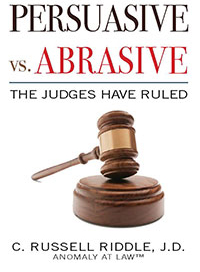Have you ever bought a fake consumer product — Gucci, Coach, Rolex, Dooney and Bourke? Let me guess. You just couldn’t pass up “the bargain.” No one can tell the difference in yours and the legitimate high-dollar brand. Besides, those corporate giants still net millions every year, despite the knockoffs out there.
You’re not alone. I know many good people who rationalize likewise.
To borrow a first century statement, “Forgive them, Father, for they know not what they do!”
Setting aside the obvious wrong — that knockoffs violate copyrights and trademarks — counterfeit products negatively impact consumers like you and me in at least three ways:
1. RETAIL PRICING FOR LEGITIMATE GOODS GOES UP AND JOBS ARE LOST
• Economic cost to companies is staggering
• Not just lost sales, but the cost of fighting infringers
• This totals approximately $12 billion annually for software piracy alone
• Across all industries, the annual cost is four times that of USA bank robberies
• The International Anti-Counterfeiting Coalition estimates that 7% of all worldwide trade is in counterfeit goods (at a cost of hundreds of billions of dollars)
2. COUNTERFEITERS’ PROCEEDS ARE OFTEN USED TO FUND ORGANIZED CRIME
• FBI evidence establishes that the 1993 World Trade Center bombers’ funding came from counterfeit textiles in NYC
• Counterfeit proceeds have been conclusively linked to Al Qaeda
• In July 2002, thousands of fake Rolex watches and Mont Blanc pens were seized in NY (prosecutors proved the defendants were laundering drug money through counterfeit sales)
• In November 2001, a Florida businessman was convicted on dealing cocaine (evidence seized included truckloads of fake clothing)
3. COUNTERFEIT GOODS ENDANGER YOUR HEALTH AND SAFETY
• Genuine goods are monitored by the Consumer Product Safety Commission and tested by licensed safety labs (obviously, counterfeits don’t comply)
• 17 people died during a 9-month period from a counterfeit prescription antibiotic
• Other seized fake pharmaceuticals include meningitis vaccines made of tap water; birth control pills made of wheat flour; and paracetamol syrup made of industrial solvents
• The World Health Organization estimates that counterfeit drugs total as much as 10% of all pharmaceuticals
• The FAA estimates that 2% of all airline parts installed annually are fake (i.e., 500,000 fake parts this year alone)
• Seven children died in a bus crash – The cause was determined to be the “name-brand” brake pads made of sawdust
• Counterfeit toys often contain toxic inks and paints (children put toys in their mouths)
• Bogus sunglasses typically aren’t shatter-resistant (eyes are lost annually)
• Pirated children’s videos taped over porn (when children’s episode ends, tape continues to run and children are exposed to the porn)
The horrors continue. Are we the consumers really getting a “bargain”?
© 2012 Russ Riddle. All rights reserved.

